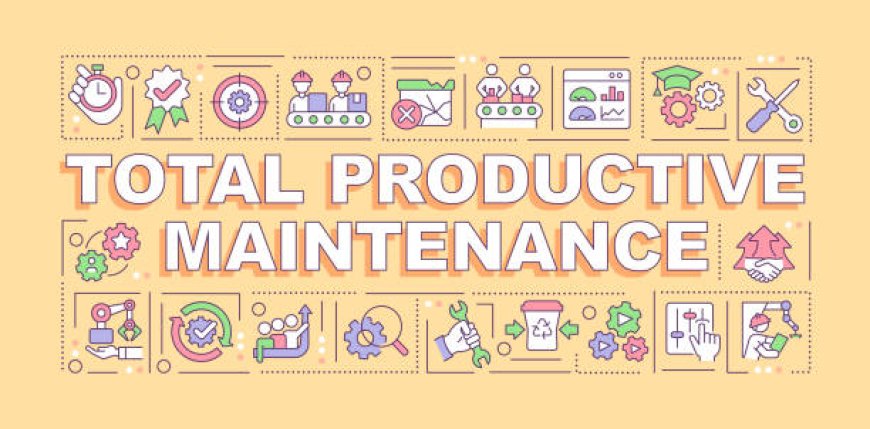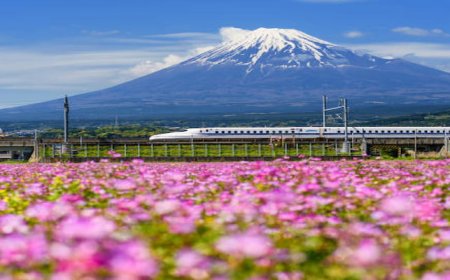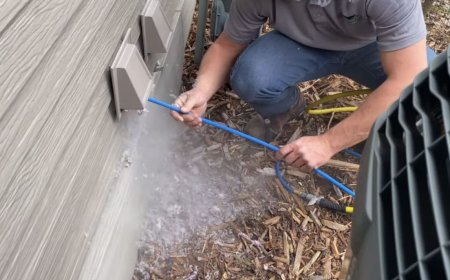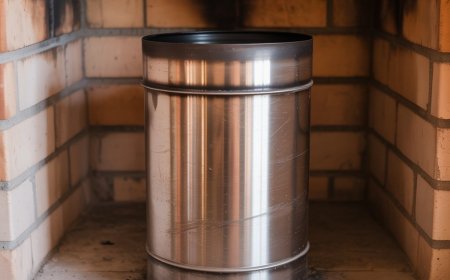How TPM Supports Safety, Quality, and Productivity Together
Discover how Total Productive Maintenance (TPM) enhances safety, quality, and productivity simultaneously, driving operational excellence in organisations.

In today's fast-paced industrial landscape, the trifecta of safety, quality, and productivity often seems like a delicate balancing act. Organisations strive for excellence in all three areas, yet enhancing one can sometimes feel like it compromises the others. Enter Total Productive Maintenance (TPM) a holistic approach that aligns and strengthens these vital elements, enhancing operational efficiency and driving sustainable growth. This blog explores how TPM supports safety, quality, and productivity, creating a synergistic impact that propels companies toward operational excellence.
Understanding Total Productive Maintenance (TPM)
Total Productive Maintenance, or TPM, is more than a maintenance strategy its a comprehensive approach that involves every employee, from top management to shop floor operators. Originally developed in Japan, TPM aims to maximise equipment effectiveness by fostering a culture of proactive and preventive maintenance. It addresses the root causes of equipment-related issues and integrates maintenance into daily operations.
The core philosophy of TPM lies in the belief that everyone plays a role in maintaining equipment, preventing breakdowns, and improving processes. Through its eight pillars Autonomous Maintenance, Planned Maintenance, Quality Maintenance, Focused Improvement, Early Equipment Management, Training and Education, Safety, Health, and Environment, and TPM in Office TPM creates a solid framework for operational excellence.
Enhancing Safety Through TPM
Empowering Employees with Autonomous Maintenance
Safety is a critical concern in any industrial setting. TPM contributes significantly to safety by empowering employees through Autonomous Maintenance. Workers are trained to conduct routine inspections, lubrication, and minor repairs, keeping equipment in optimal condition. This empowerment not only increases their knowledge of machinery but also reduces the likelihood of accidents caused by unexpected failures.
When employees take ownership of their equipment, they become more vigilant in spotting potential hazards. Their active involvement in maintenance creates a safer environment where issues are addressed before becoming safety incidents. TPM embeds safety into daily routines, making it an integral part of operations rather than a separate initiative.
Safety as a Pillar of TPM
The Safety, Health, and Environment pillar of TPM is dedicated to fostering safe workplaces. Through systematic hazard identification and implementation of corrective actions, TPM ensures safety protocols are not just written policies but practised procedures. Regular safety audits and risk assessments further reinforce a culture of continuous safety improvement.
Elevating Quality with TPM
Quality Maintenance and Defect Prevention
Quality is central to customer satisfaction and brand credibility. TPM supports quality through its Quality Maintenance pillar, which focuses on maintaining equipment conditions that prevent defects. By keeping machines in peak condition, TPM reduces process variation and promotes consistent product quality.
Proactive maintenance minimises the risk of equipment-related defects, improving product consistency and reducing rework or scrap. Employees are encouraged to engage in problem-solving, addressing potential quality issues before they affect output. This collaborative approach leads to fewer defects, higher satisfaction, and lower quality-related costs.
Continuous Improvement for Quality Enhancement
TPM's Focused Improvement pillar promotes Kaizen-based continuous improvement. Cross-functional teams work to identify improvement areas, implement changes, and evaluate outcomes. This iterative process enhances quality and fosters a culture of innovation, where employees actively contribute to better products and processes.
Boosting Productivity Through TPM
Minimising Downtime with Planned Maintenance
Productivity, often measured by throughput and efficiency, is essential to business performance. TPM enhances productivity through its Planned Maintenance pillar, which focuses on scheduling maintenance during non-peak times and addressing potential failures proactively. This ensures that equipment is available and reliable when needed most.
By reducing unplanned downtime, TPM improves machine uptime and production continuity. The result is better utilisation of resources, consistent delivery on production targets, and greater operational efficiency.
Streamlining Operations with Focused Improvement
The Focused Improvement pillar also enhances productivity by streamlining operations. By systematically identifying and eliminating waste, TPM reduces cycle times, optimises workflows, and improves output. This structured approach helps organisations increase throughput without sacrificing safety or quality.
The Synergistic Impact of TPM
Creating a Culture of Continuous Improvement
TPM's true strength lies in creating a culture of continuous improvement. When employees at all levels participate in maintenance and problem-solving, they develop a sense of ownership and accountability. This mindset drives ongoing improvements across safety, quality, and productivity.
The cultural shift toward collaboration and innovation makes organisations more agile and responsive to market changes. TPM cultivates resilience, enabling companies to maintain high standards while adapting to evolving demands.
Measuring Success and Sustaining Gains
The success of TPM is measured using key performance indicators (KPIs) such as reduced accident rates, lower defect levels, and improved equipment uptime. These metrics provide a clear picture of progress and help organisations sustain the gains made through TPM.
TPM also emphasises training and education, equipping employees with the skills to maintain and enhance systems. This investment in people supports the long-term sustainability of TPM efforts while boosting employee engagement and retention.
Conclusion
Total Productive Maintenance is a powerful methodology that harmonises safety, quality, and productivity within an organisation. By integrating maintenance into daily operations and involving every employee, TPM fosters a culture of proactive improvement. The result is a synergistic effect that drives operational excellence and sustainable success.
As businesses face increasing complexity and competition, TPM provides a roadmap for balancing safety, quality, and productivity without compromise. With its comprehensive framework and focus on employee empowerment, TPM enables organisations to meet their goals while nurturing a culture of safety, efficiency, and excellence.







































